
Best Sony Lens for Underwater Photography: Top Picks & Buying Guide 2025
If you’ve ever tried to capture the beauty of the underwater world, you already know that light, color, and clarity behave differently beneath the surface. Water distorts everything – even your best-planned shots. That’s why choosing the Best Sony Lens for Underwater Photography can make or break your images. It’s not just about how sharp the glass is; it’s about how the lens handles light, distance, and depth while preserving natural color and detail.
Whether you’re diving through coral reefs or exploring a pool for creative shoots, Sony’s range of lenses offers some of the best options for underwater image quality. In this guide, we’ll walk through the top choices, explore what makes a lens great underwater, and help you decide which model suits your shooting style in 2025.
Let’s dive right in – literally.
Why the Right Lens Matters Underwater
Underwater photography is not the same as land photography. Once you submerge your camera, light starts to scatter, colors shift, and focus becomes trickier. Reds and oranges fade quickly, and contrast softens. That’s why the Best Sony Lens for Underwater Photography isn’t just about having a fast aperture or sharp optics – it’s about choosing the right focal length and lens design that works with water’s physical limitations.
Wide-angle and macro lenses are the two most popular choices underwater. Wide-angle lenses allow you to get close to your subject while still capturing the vastness of a reef or a school of fish. This helps reduce distortion and minimizes the amount of water between the lens and your subject, giving clearer, sharper results.
Macro lenses, on the other hand, are essential for close-ups – think tiny nudibranchs, seahorses, or coral details. They allow photographers to focus on intricate marine textures and colors that might otherwise go unnoticed.
Choosing the Best Sony Lens for Underwater Photography depends on your goal. Are you shooting wide reef landscapes, playful dolphins, or minuscule shrimp hiding in coral crevices? Each type of subject demands a different approach – and Sony offers lenses that excel in every category.
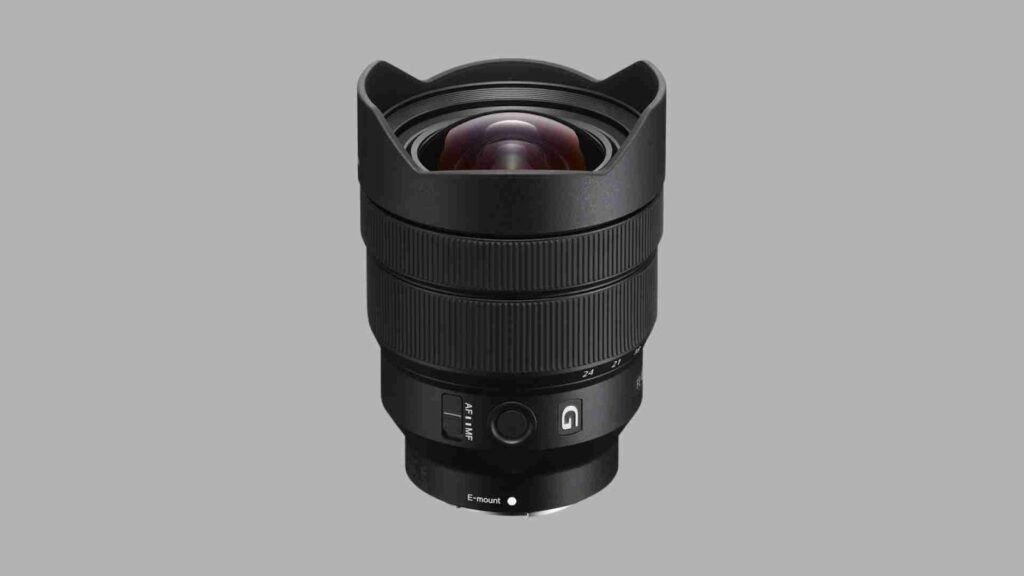
1. Sony FE 12-24mm F4 G – The Ultimate Wide-Angle Adventure Lens
When it comes to capturing wide underwater scenes, few lenses compete with the Sony FE 12-24mm F4 G. It’s a favorite among professional divers and travel photographers who want to showcase large environments without sacrificing clarity.
This lens offers a dramatic 12-24mm focal range, which allows you to capture everything from an entire coral reef to a diver swimming alongside a turtle. The distortion is minimal compared to fisheye lenses, and the sharpness is consistent across the frame. That’s a big deal underwater, where edge sharpness often drops due to dome port curvature.
With its compact and lightweight design, this lens also fits comfortably into many underwater housings. It performs beautifully in natural light at shallower depths and works even better with strobes or continuous lighting. While the fixed F4 aperture might sound modest, underwater lighting setups make up for it, producing balanced exposure and rich color.
If you’re serious about dramatic wide-angle compositions, this is easily one of the Best Sony Lenses for Underwater Photography you can buy in 2025.
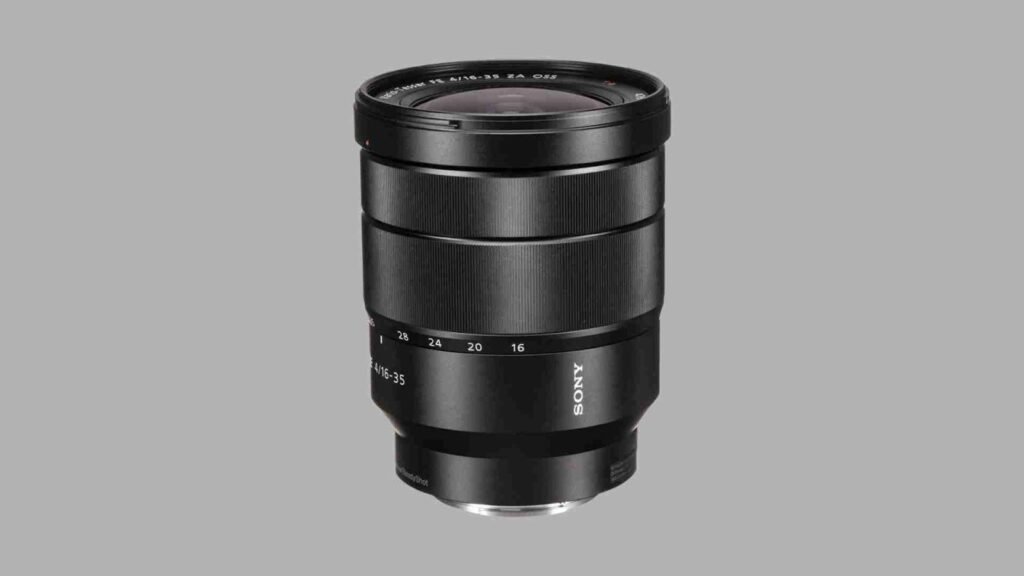
2. Sony FE 16-35mm F4 ZA OSS – The Versatile Favorite
Not every dive is the same, and sometimes flexibility matters more than extreme width. That’s where the Sony FE 16-35mm F4 ZA OSS comes in. It’s versatile, reliable, and designed for both wide-angle and medium-range shots.
This lens gives you the freedom to zoom in slightly when your subject is farther away – something fixed wide-angles can’t do. The 16-35mm range also makes it easier to switch from capturing a wide reef to focusing on a single diver or large fish without changing lenses or ports.
Optical SteadyShot (OSS) stabilization helps reduce motion blur, which is a lifesaver underwater where even small movements can affect sharpness. And the Zeiss T* coating enhances color fidelity and contrast – two areas that often degrade underwater.
Many underwater photographers consider it the most balanced option, especially for those starting out with a Sony full-frame system. If you’re looking for flexibility, sharpness, and consistent performance, this model earns its spot among the Best Sony Lens for Underwater Photography.
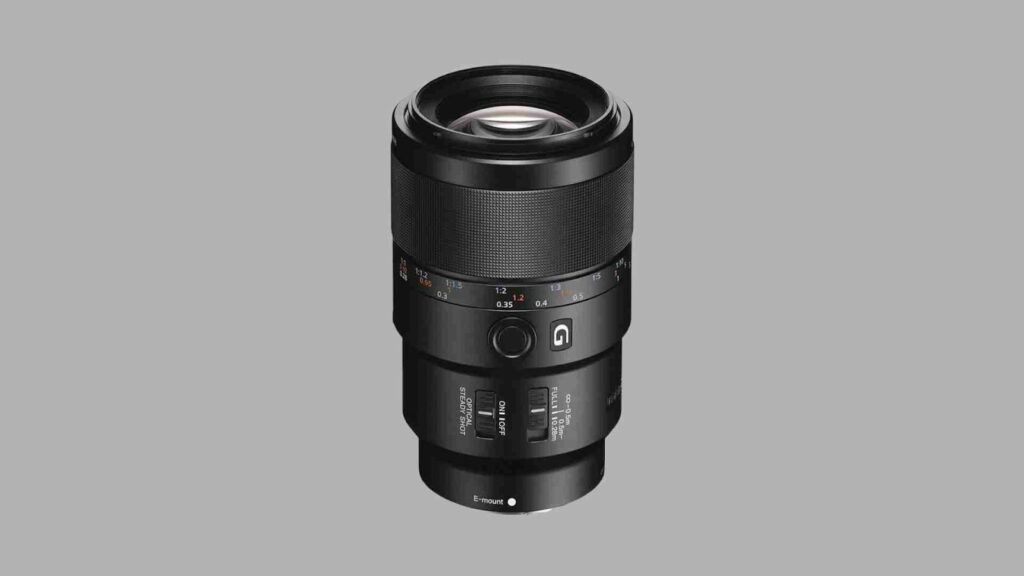
3. Sony FE 90mm F2.8 Macro G OSS – For True Underwater Macro Lovers
For macro photographers, the Sony 90mm F2.8 Macro G OSS is a masterpiece. It delivers extraordinary detail, perfect for capturing small marine life that thrives in coral cracks or sandy beds.
This lens offers a 1:1 magnification ratio, meaning subjects appear at life size on your sensor – a crucial feature for detailed macro shots. The autofocus is quick and accurate, and it performs surprisingly well even in low light conditions when paired with focus lights.
Underwater, it allows you to stay a comfortable distance away from delicate subjects while still getting razor-sharp focus. Its optical stabilization helps maintain clarity even when you’re holding your position mid-water.
If you’re someone who appreciates the artistry of close-up ocean photography, there’s no doubt this is one of the Best Sony Lens for Underwater Photography available today. It’s perfect for those macro enthusiasts who enjoy patience, precision, and a bit of underwater detective work.

4. Sony FE 28mm F2 with Dome Port – Budget-Friendly Wide Solution
Not every photographer wants to spend thousands on lenses, especially when starting out. The Sony FE 28mm F2 is a great entry-level choice for those looking to explore underwater wide-angle photography on a budget.
When paired with a fisheye or dome converter, this lens opens up a much wider field of view – making it surprisingly versatile for underwater scenes. The fast F2 aperture helps gather light effectively in deeper or dimmer environments, and its small size makes it easy to manage underwater.
Despite being affordable, its image quality holds up extremely well, and it’s compatible with many housing systems. For beginners or travelers who need something compact, this is a strong contender for the Best Sony Lens for Underwater Photography in 2025 without breaking the bank.
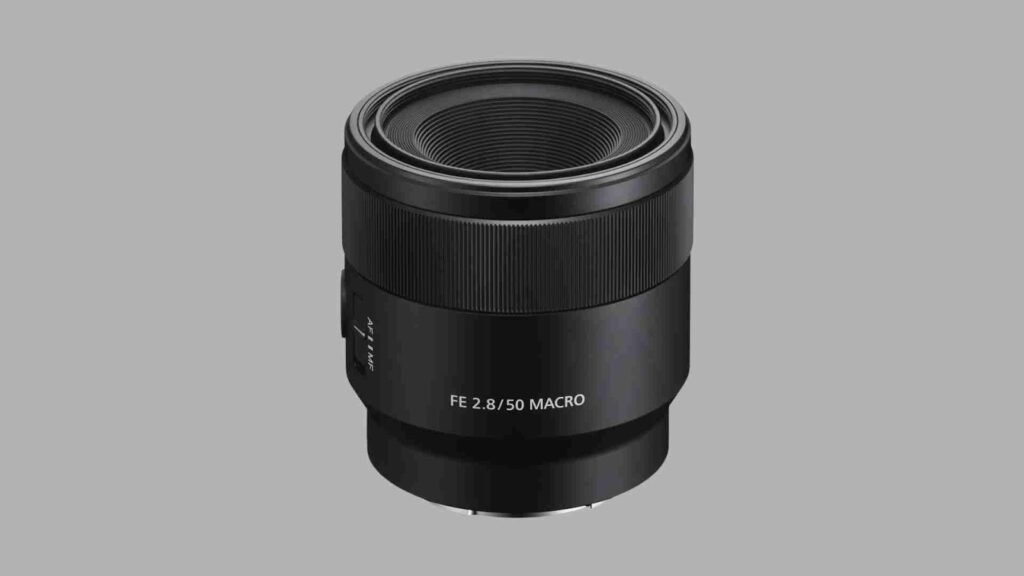
5. Sony 50mm F2.8 Macro – A Compact Choice for Mid-Range Subjects
If you want a macro lens but prefer something lighter and more manageable than the 90mm, the Sony 50mm F2.8 Macro is worth considering. It’s ideal for shooting mid-sized marine life like small fish, sea fans, or coral clusters.
This lens focuses incredibly close, and its shorter focal length makes it easier to aim in tight spaces – such as under ledges or near rocks where sea creatures hide. The only trade-off is that you need to get physically closer to your subjects, which might not be ideal for shy marine life.
Still, its affordability, size, and stunning clarity make it one of the Best Sony Lens for Underwater Photography for anyone who prefers mobility and simplicity.
Understanding Lens Types for Underwater Photography
Let’s pause for a moment and talk about lens categories. When you’re trying to pick the Best Sony Lens for Underwater Photography, understanding lens types will help you make smarter choices.
Wide-angle lenses are essential for scenes that include reefs, divers, or marine animals. They let you get close to your subject while still fitting everything in the frame. Getting close reduces backscatter – those floating dots of light caused by particles in the water.
Macro lenses, on the other hand, let you get up close and personal with small marine creatures. They’re perfect for shooting textures, details, and subjects that don’t move quickly.
Standard lenses like the 28mm or 35mm work well for general underwater shooting – such as portraits of divers or balanced scenes that don’t need extreme close-ups or ultra-wide coverage.
Each has its strengths, so the real “best” depends on your shooting goals and dive conditions.
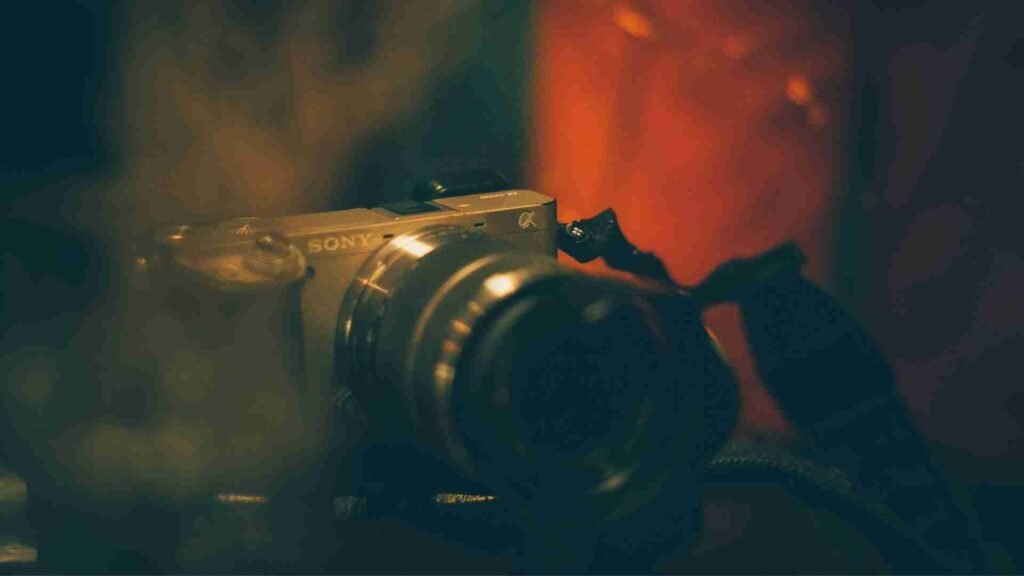
How to Choose the Best Sony Lens for Underwater Photography
Now that we’ve looked at some of the top lenses, let’s focus on how to pick the right one for your specific underwater goals. Buying the Best Sony Lens for Underwater Photography isn’t about picking the most expensive or the widest lens-it’s about choosing what complements your dive style, subject preference, and equipment setup.
1. Know Your Camera Type
Sony cameras come in different sensor sizes-full-frame and APS-C (crop sensor). Lenses like the Sony FE 12-24mm F4 G are designed for full-frame cameras, but they also work on crop sensors with a 1.5x field-of-view change. If you use an APS-C model like the Sony a6600, your 16-35mm becomes roughly a 24-52mm underwater, slightly limiting your wide coverage.
Understanding your camera body ensures that you get the right focal range once you’re underwater. The Best Sony Lens for Underwater Photography for your setup might be completely different from someone using a different Sony body.
2. Consider Your Shooting Environment
Every underwater environment behaves differently. If you’re diving in tropical, crystal-clear waters, a wide-angle lens like the 12-24mm or 16-35mm will thrive. But if you’re in murkier or low-visibility waters, macro lenses might deliver better results since they reduce the amount of water between you and the subject.
Wide lenses excel when light is strong and water is clear. Macro lenses perform best when you have good artificial lighting like strobes or focus lights. So, your lens choice should reflect your most common dive conditions.
3. Dome Ports and Flat Ports Matter
One of the biggest mistakes beginners make is overlooking ports. The Best Sony Lens for Underwater Photography can only perform at its peak if paired with the correct port type. Wide-angle lenses typically require dome ports, which preserve field of view and minimize distortion. Macro lenses, on the other hand, work best with flat ports that maintain magnification and sharpness.
Make sure your housing brand (Ikelite, Nauticam, Sea & Sea, etc.) supports your lens and offers compatible zoom gears if needed. Proper pairing ensures image clarity and reduces unwanted softness at the edges.
4. Focus Speed and Stability
Underwater conditions challenge autofocus systems. Particles, low light, and movement make it harder for cameras to lock focus. That’s why lenses with fast and reliable autofocus-like the Sony 90mm Macro or the 16-35mm Zeiss-are favorites among divers.
Optical stabilization also helps reduce blur when you’re floating mid-water. The OSS (Optical SteadyShot) feature in some Sony lenses adds an extra layer of sharpness, especially for handheld shots.
5. Aperture and Light Control
Light behaves differently underwater-it scatters, fades, and turns blue fast. A wide aperture (F2.8 or F4) helps gather more light, but underwater photography relies heavily on strobes or video lights for true color reproduction. So, while aperture matters, lighting setup plays an even bigger role.
When shopping for the Best Sony Lens for Underwater Photography, balance aperture with versatility. A lens that’s sharp at F4 with strong lighting support might outperform an F2.8 lens that struggles with edge distortion underwater.
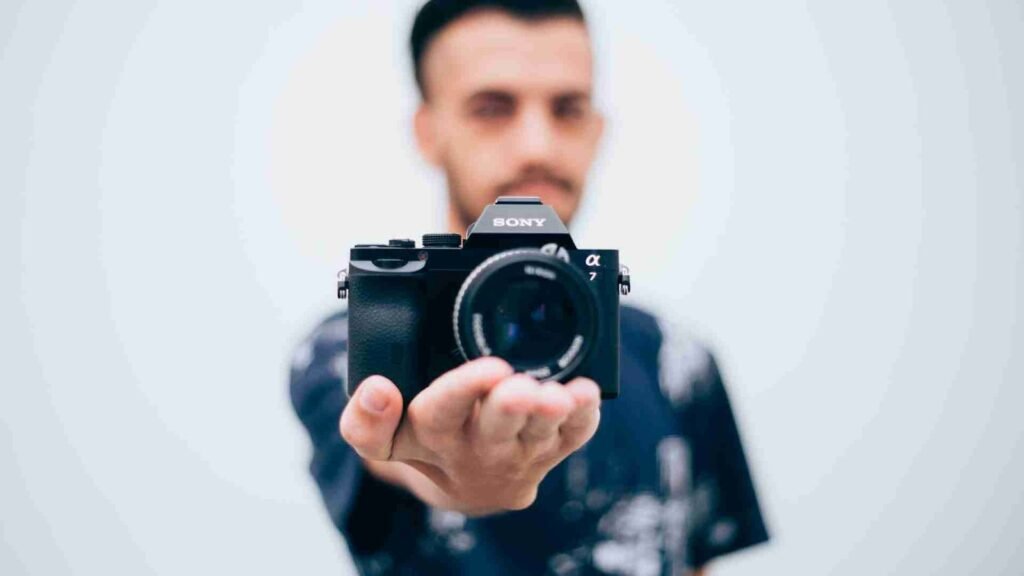
Professional Tips for Better Underwater Photos
Getting the right lens is only half the story. To make the most of the Best Sony Lens for Underwater Photography, you need good habits, proper techniques, and awareness of how light and color behave beneath the surface.
Get Close-Then Get Closer
Water absorbs detail, color, and contrast the farther your subject is. The rule of thumb underwater: get close, then get even closer. Wide-angle lenses allow you to fill the frame while reducing the water column between you and the subject. That’s why underwater pros always emphasize proximity.
Use Proper Lighting
Even the Best Sony Lens for Underwater Photography won’t save a shot taken in dim light without assistance. Use underwater strobes or continuous lights to bring back lost reds, oranges, and yellows. Artificial light restores the natural vibrancy of your scene and enhances texture, especially for macro photography.
If you shoot ambient light (without strobes), stay shallow-under 10 meters-where sunlight can still reach effectively.
Watch Your Composition
Underwater photography thrives on creativity. Use leading lines like coral ridges, diver silhouettes, or rays of light to guide the viewer’s eye. Wide-angle lenses make compositions dramatic; macro lenses focus on detail and intimacy. Experiment with angles-shoot upward to capture light beams or frame your subject against open water for contrast.
Remember, the Best Sony Lens for Underwater Photography helps you express your artistic vision, but your composition makes the photo memorable.
Mind the Bubbles
It might sound funny, but bubbles ruin many otherwise perfect underwater shots. When exhaling near your subject, pause your breath gently or angle your camera to avoid floating bubbles in front of your lens. Patience and timing matter just as much as camera gear.
Regular Lens and Port Maintenance
Saltwater can be tough on lenses, ports, and seals. Always rinse your gear thoroughly with fresh water after every dive. Avoid wiping the port underwater-use a blower or lens cloth topside once it’s dry. Even the Best Sony Lens for Underwater Photography can’t survive neglect.
Comparing Wide vs. Macro Setups
To decide which lens suits you, it helps to compare the shooting experience.
Wide-Angle Setup:
With a wide-angle lens like the 12-24mm or 16-35mm, your goal is to get close to large subjects-wrecks, reefs, schools of fish, or manta rays. You’ll need a dome port and usually two strobes for even lighting. The reward? Expansive, cinematic images filled with depth and motion.
Macro Setup:
A macro setup, such as the Sony 90mm F2.8 Macro G OSS, focuses on tiny details-like a shrimp on a coral branch or the eye of a small fish. It requires precise lighting control and patience but produces breathtaking results full of color and texture.
Each style has its charm, and many professional photographers carry both systems. But if you’re starting out, pick one style first and master it before investing in multiple lenses.
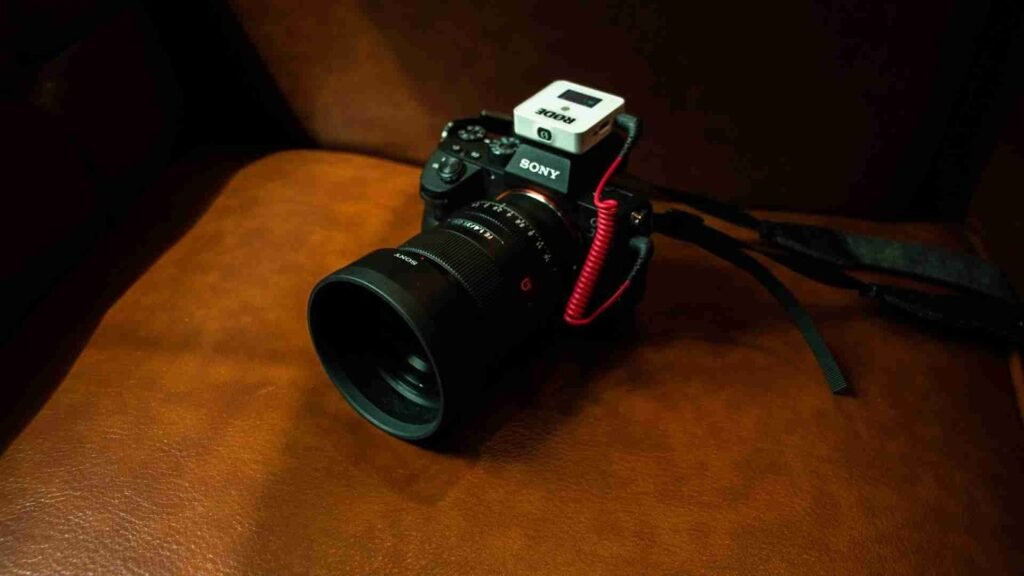
Budget and Value Considerations
Not everyone needs to spend thousands to get great underwater shots. The Best Sony Lens for Underwater Photography depends on your budget and the accessories you already own.
If you’re a beginner using an entry-level Sony body, start with affordable primes like the Sony 28mm F2 or Sony 50mm F2.8 Macro. They’re light, sharp, and compatible with a wide range of housings. As you grow, upgrade to high-end glass like the 16-35mm or 90mm Macro to expand your creative range.
Also, consider used markets-many underwater photographers upgrade gear often, meaning you can find excellent lenses secondhand at a fraction of the price.
Future Trends in Sony Underwater Lenses (2025 and Beyond)
Sony continues to refine its mirrorless ecosystem, focusing on optical sharpness, reduced chromatic aberration, and faster autofocus. Many photographers expect even more compact yet powerful lenses designed for hybrid photo-video work underwater.
Third-party brands like Sigma and Tamron also now produce impressive E-mount lenses compatible with Sony systems. While Sony’s native lenses remain unmatched for autofocus precision, exploring these alternatives can save money without compromising much quality.
The Best Sony Lens for Underwater Photography in the coming years might be a mix of Sony native optics and high-performing third-party innovations. The future looks bright-and clear-even underwater.
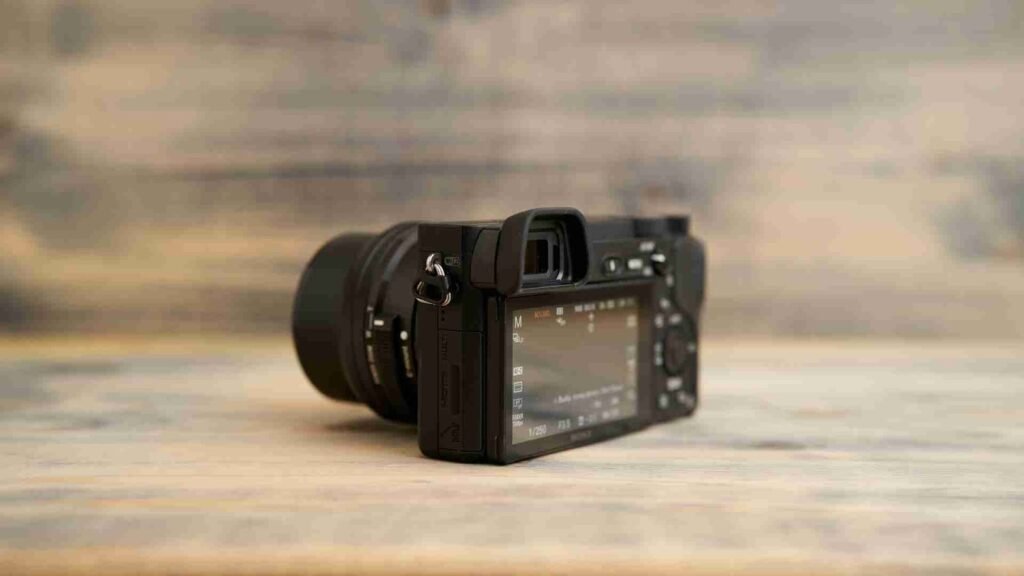
Final Thoughts: Choosing the Best Sony Lens for Underwater Photography
Underwater photography is more than a technical skill-it’s a love letter to the ocean. Choosing the Best Sony Lens for Underwater Photography is about understanding how you want to tell your story beneath the waves. Whether it’s the sweeping view of a coral reef with the 12-24mm, the balanced versatility of the 16-35mm, or the intricate detail of the 90mm Macro, every lens opens a different chapter of your underwater journey.
No matter which model you choose, remember that composition, lighting, and creativity matter just as much as gear. Practice regularly, learn how your lens behaves underwater, and invest in good lighting-it’s what transforms a decent shot into something magical.
Enhance Your Underwater Photos with aitinsider
After your dive, the real magic happens in post-processing. Even the best lenses can’t fully compensate for light loss, color shifts, or particles floating in the water. That’s where aitinsider comes in.
At aitinsider, we specialize in professional image editing services for photographers, brands, and creatives who want to take their visuals to the next level. Our team fine-tunes underwater images by restoring natural color, enhancing sharpness, and removing distractions-all while keeping your work authentic and vivid.
If you want your underwater shots to look as breathtaking as they felt when you captured them, trust aitinsider to handle the post-editing process. Whether you’re preparing prints, building a portfolio, or showcasing your dive photography online, we make your images stand out beautifully.
Visit aitinsider today to explore our editing services and give your underwater photography the professional finish it deserves.
